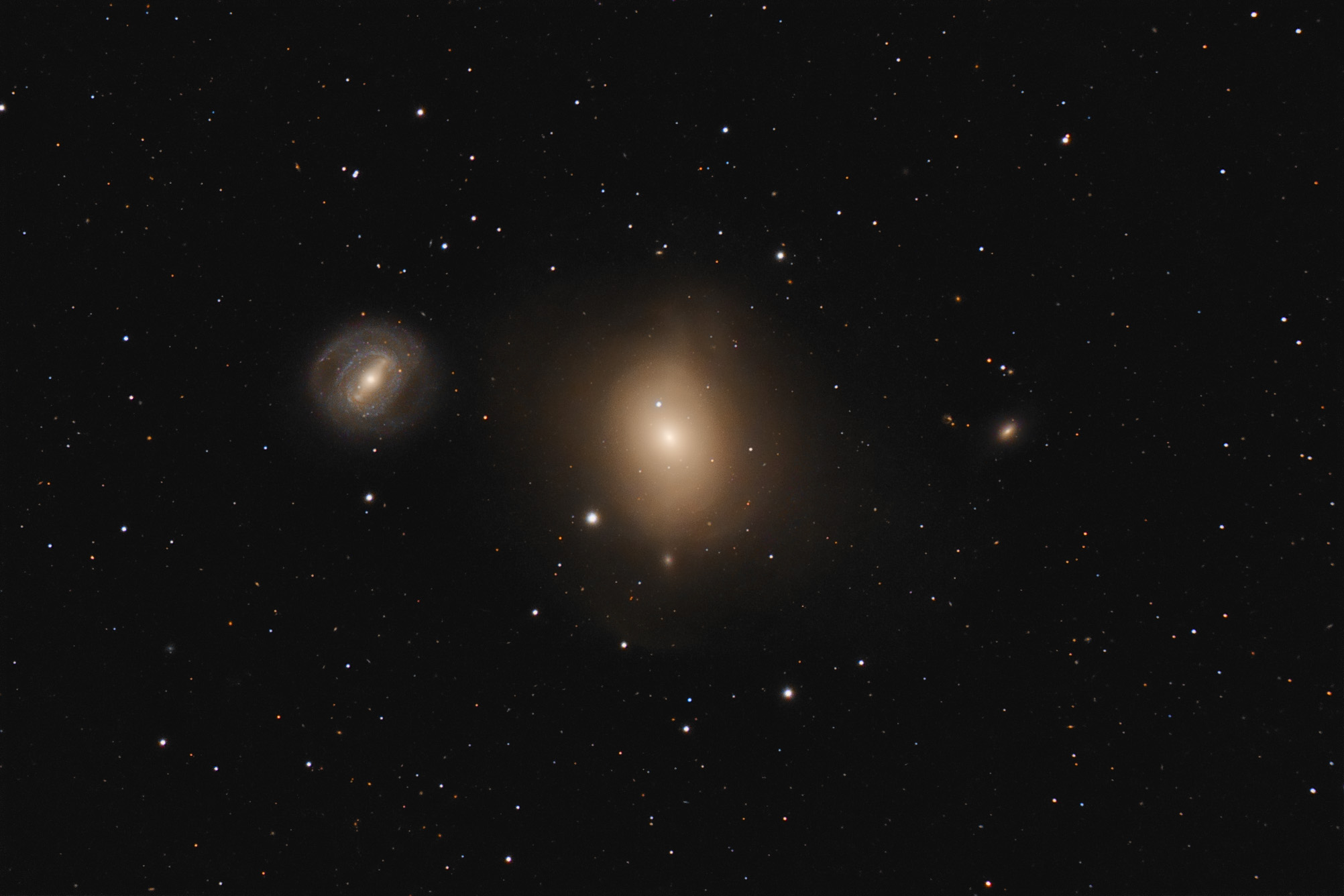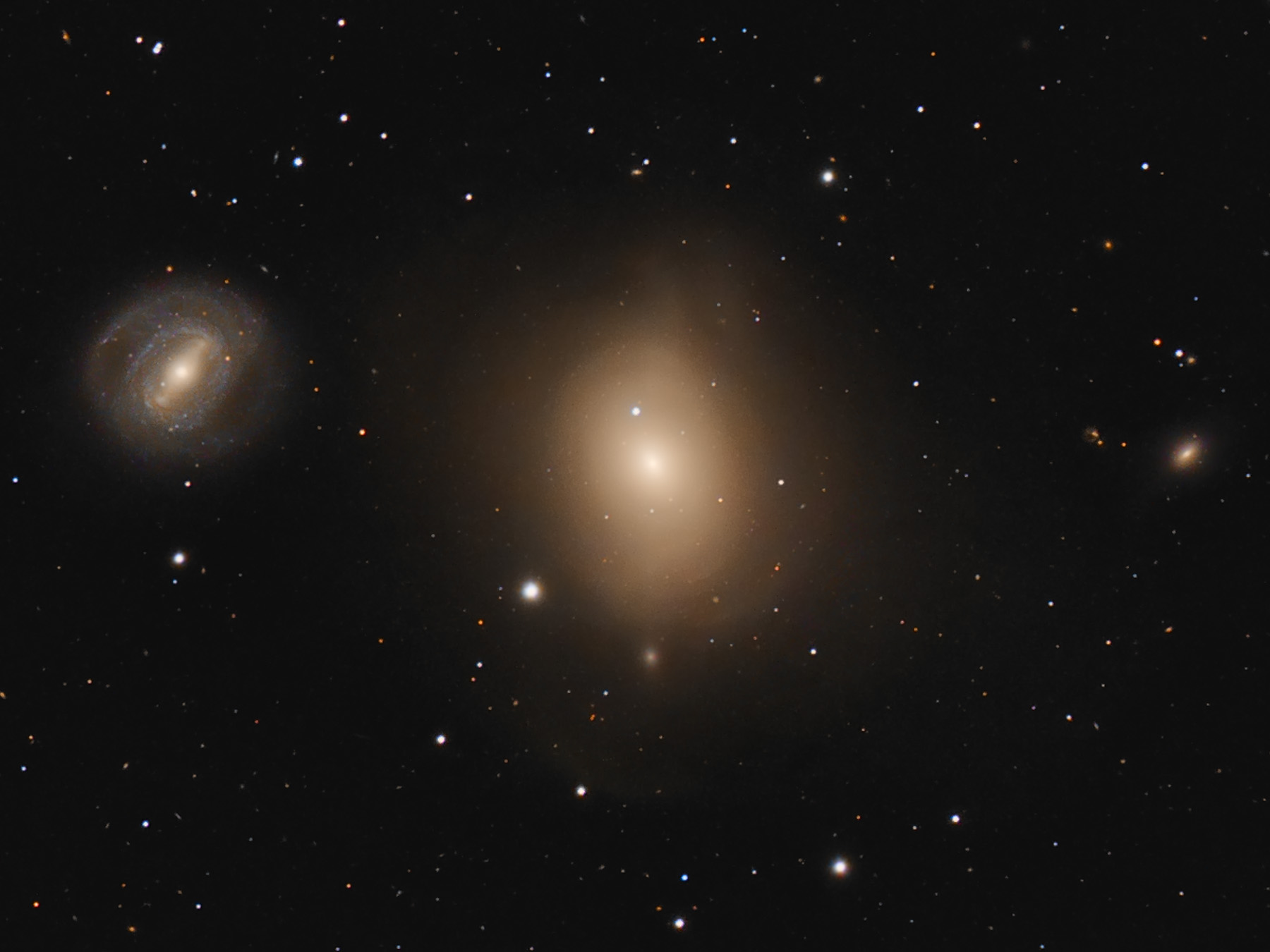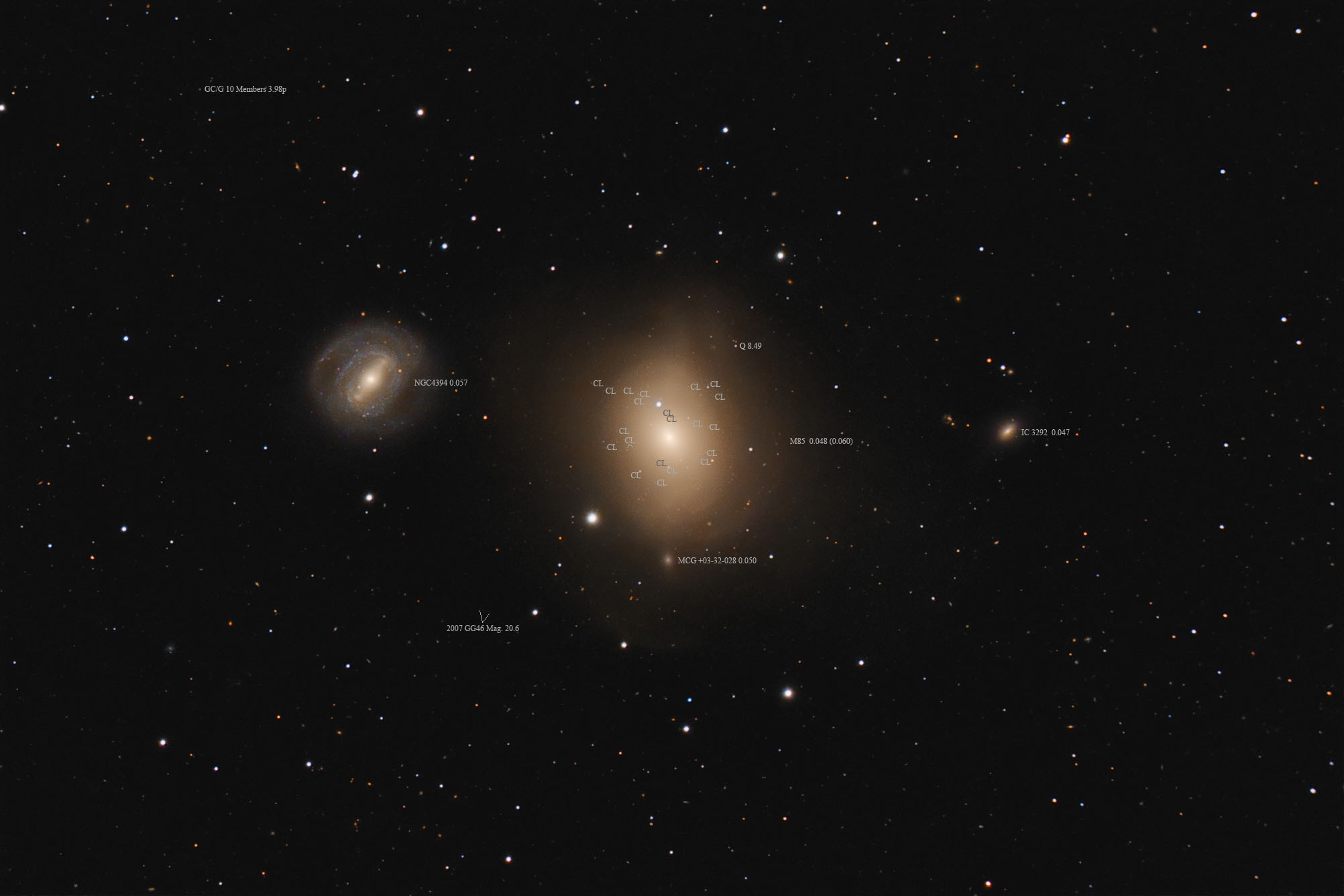| Description | Images |
Object name: M085Designation(s): M085, NGC4394, IC3292, M85 is one of the large elliptical-like galaxies in the Virgo cluster. It is near the northern edge of the cluster in Coma Berenices. Being that the cluster is about 60 million light-years distant that is likely close to its true distance. Redshift puts it at 48 million light-years while various other methods give distances ranging from 28 to 95 million light-years. They average out to about 55 million light-years. Even though this is a much studied galaxy we still don't have a good grasp of its distance. Using the 60 million light-year figure the bright region of the galaxy is about 88 thousand light-years across with the outer halo extending about 170 thousand light years. NED classes it as SA(s)0+ pec while the NGC project says SA(s)+P. It is a shell galaxy indicating it has had a close interaction with other galaxies in the past, likely devouring a few smaller members of the cluster. While they aren't as distinct as they were in some other shell galaxies several shells and plumes are seen in my image. Related Designation(s):2MASS J12244834+1811424, 2MASS J12255563+1812501, 2MASX J12244836+1811422, 2MASX J12252405+1811278, 2MASX J12255562+1812501, 2MASXi J1224483+181142, 2MASXi J1225240+181125, 2MASXi J1225556+181250, 2XMM J122448.5+181140, 2XMM J122524.0+181129, 2XMM J122555.6+181250, 2XMMp J122448.4+181141, 2XMMp J122524.0+181129, 2XMMp J122555.6+181249, ACSVCS 005, ACSVCS 088, ASK 650550.0, CGCG 099-039, CGCG 099-045, CGCG 099-047, CGCG 1222.3+1828, CGCG 1222.9+1828, CGCG 1223.4+1830, CXO J122448.4+181141, CXO J122524.1+181129, CXO J122555.5+181250, CXOU J122448.46+181141.8, EVCC 0529, EVCC 0554, EVCC 0583, GALEXASC J122448.48+181141.1 , GALEXASC J122524.10+181128.0 , GALEXASC J122555.65+181251.1 , GIN 779, HDCE 0720 NED074, HDCE 0720 NED081, HIPASS J1225+18, HOLM 397A, HOLM 397B, IC 3292, IC3292, IRAS 12234+1829, IRAS F12234+1829, KPG 334A, KPG 334B, LDCE 0904 NED096, LDCE 0904 NED103, LGG 289:[G93] 025, LGG 292:[G93] 035, M085, MCG +03-32-029, MCG +03-32-035, MESSIER 085, NGC 4382, NGC 4394, NGC4394, NPM1G +18.0327, NSA 117792, NSA 141323, NSA 141339, PGC 040425, PGC 040515, PGC 040614, RSCG 54:[WBJ2013] A, RSCG 54:[WBJ2013] B, RSCG 54:[WBJ2013] C, SDSS J122448.35+181142.4, SDSS J122448.36+181142.4, SDSS J122524.06+181127.7, SSTSL2 J122555.58+181249.4, UGC 07508, UGC 07523, USGC U490 NED244, USGC U490 NED253, USGC U490 NED264, UZC J122448.4+181143, UZC J122524.2+181128, UZC J122555.7+181250, VCC 0751, VCC 0798, VCC 0857, [FCJ2006] 005, [FCJ2006] 088, [M98j] 174 NED85, [M98j] 174 NED91, [PJC2008] 005, [PJC2008] 088, [TH2002] 004, [TH2002] 012, [TH2002] 068, | Permanent link: https://images.mantrapskies.com/catalog/MESSIER/M085-NGC4394-IC3292/M85L4X10RGB2X10R.JPG |


